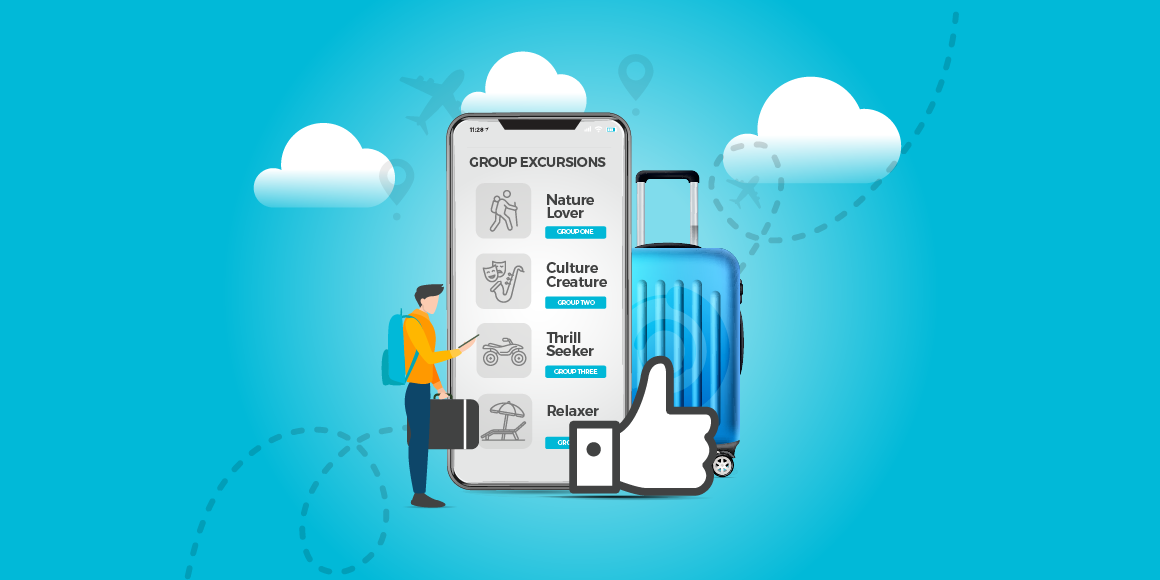In the last couple of years, incentive travel has been making a comeback.
Why? Because it’s always been one of the best drivers of performance. And when it’s done right, an incentive trip can be a true differentiator for you among your competitors.
Of course, when it comes to incentive travel, there’s always a lot to consider.
There’s a need to identify international challenges and prepare for and avoid common trip-planning mistakes. You’ll want to properly analyze the demographics of your program audience, or perhaps find new, cost-effective ways to fund your program. And this is just the beginning.
Ultimately, awareness of incentive travel best practices can often make the difference between a good trip that comes close to your ROI expectations, and a great trip that exceeds them.
A Case for Incentive Travel
But if you’re not an incentive company, you probably don’t have a ton of internal resources to devote to your program. This makes it hard to account for all of the nuances that go into planning and managing an incentive trip.
In other words, knowing what needs to be done and actually having the resources to go out there and do it are two very different things.
You probably know where we’re going with this. As you consider how to proceed with your incentive trip, consider your three basic options:
Option #1: Don’t offer a group incentive travel program at all (the “It’s not worth it” option)
Option #2: Run a group incentive travel program, but do it in-house (the “It’s worth it, but I’m not sure how much” option)
Option #3: Hire a third-party to organize and manage your program (the “I know how valuable a well-designed program can be” option)
If you accept the latest research by the Incentive Research Foundation (IRF), which highlights many of the hard and soft benefits of incentive travel, you’ll probably want to go ahead and cross off Option #1.
That just leaves us with Options #2 and #3. Now, most organizations that reach this point in the decision-making process will likely contend that hiring a third-party to oversee an incentive travel program is more expensive upfront.
That might be true, but the real question isn’t about cost—it’s about value, that ever-elusive ROI. In this sense, these types of programs can work, but if you want to generate the types of desired behaviors you’re looking for, you need to focus on careful program design.
Incentive travel programs demand a unique set of insights and best practices in order to get the most out of them. This may be why best-in-class companies are more likely to employ third-party incentive professionals to design their programs.
Now, it could be argued that these companies choose to do this because they can afford to.
However, separate IRF research suggests that these companies—and the executives who run them—place a greater significance on incentive programs than do their less successful peers. The implication here is that these top organizations believe outsourcing their programs to third-party professionals can create additional value through superior program design.
So, what are some of the enhanced design features you can get for your incentive travel program simply by outsourcing its execution? There are a lot of different enhancements, but here are just a couple:
Strategy Vs. Fulfillment
Anybody can book a trip. But how much can you know about a place if you’ve never been there before?
It’s why they’ll often ask friends who’ve traveled to a certain destination for travel advice about the destination before we go. The same is true with incentive trips.
It’s why most incentive travel organizations will do site inspections of potential properties long before they send a group there. It’s because it takes experience to know things like which local DMCs provide the best services, how to negotiate the best deal with luxury properties, and how to develop and leverage relationships with local personnel.
Knowing not just which questions to ask, but also where you can find the answers, can be a laborious task without a strategic partner.
Added Value
For most people, an incentive trip is like a vacation. It’s a luxury, and people tend to enjoy luxuries when they’re not the norm.
But if you want your trip to be more than just a vacation for your participants—to be an event that’s truly memorable—then it will be important to find little ways to add value to the program.
Maybe you’re hosting a welcome event, but are you featuring a DJ or a live band? Are you offering a unique room gift for your VIPs? Do you have an app that helps your participants stay connected to each other during the trip? Were you able to find any low-cost excursions for your group, or does your itinerary mostly read “day of leisure”?
These types of add-ons aren’t the only way that a third-party can provide value to your program. By working with professionals who consistently purchase large blocks of airline tickets, hotel rooms, and group activities, you can also leverage the tremendous buying power that accompanies these relationships.
This helps to keep costs low while providing opportunities that might otherwise be priced out of your budget.
Finding ways, no matter how big or small, to add value to the trip experience is one of the big advantages that comes with outsourcing your group incentive travel program, helping to turn a good trip into a great one.
Partners, Not Just Clients
When you outsource your group incentive travel program, your partner should be with you every step of the way.
They should be as committed to your program as you are, if not more. From the point of contact, your goals become their goals.
As the program develops, they’re available 24/7 to provide support and troubleshoot any unexpected issues.
This includes dedicated program managers overseeing 24-hour live flight watch and accommodating special needs or requests. It involves working with individual participants on late arrivals or trip extensions, and consistently communicating with experienced onsite staff.
A third-party organization can also monitor the progress and success of your program with real-time reporting, helping to forecast participation while managing growth and attrition. By interpreting data and identifying trends, they can propose real-time solutions that can really help move the needle.
Finally, once the trip is finished, they’re there to offer concrete analysis of what worked, what didn’t, and how to improve it moving forward.
Conclusion
All of which is to say that outsourcing your group travel program can provide a number of valuable benefits to your program. Are you taking advantage of these benefits, or trying to do it all yourself?
To learn more, contact us to get the full scope of what an experienced incentive travel partner can do for you.






